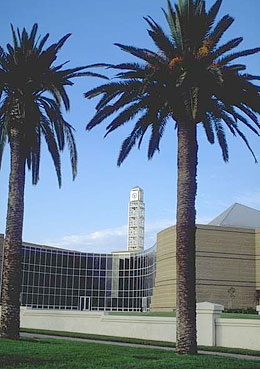Salinity Management Guide

Determining a factor for landscape plants other than turfgrass, part 2: Observation-based approach
Assigning a microclimate factor, KMC
The microclimate factor (KMC) in the equation for calculating KL accounts for the presence of site-specific characteristics that increase or decrease a landscape's temperature, humidity, and exposure to wind and sunlight. Examples are: sloping terrain and nearness to extensively paved areas, large buildings, cars, and similar heat-emitting or light-reflecting surfaces. Any such features can alter upward or downward the losses of water from the landscape.
Assign the microclimate factor as follows:
- Assign low value (0.5–0.9)
- if shaded for a substantial part of the day, especially in the afternoon — for example, on the north or northeast side of a building or under a building's overhang
- if protected from wind by a building, structure, or other plants — for example, located in a courtyard or on the north side of a slope
- Assign average value (1.0)
- if not exposed to atypical winds or atypical inputs of heat, as might be caused by nearby buildings or by reflective surfaces such as a building's windows
- Assign high value (to 1.1–1.4)
- if exposed to atypical winds — for example, inside a "wind tunnel" formed by buildings or by hilly terrain
- if surrounded by heat-absorbing surfaces — for example, located in a parking lot or next to the south- or southwest-facing wall of a building
- if exposed to high amounts of light reflected by nearby windows, automobiles, or other reflective surfaces
| « Previous page | Next page » |